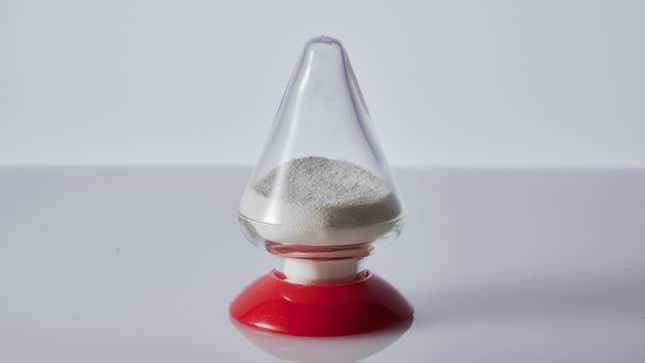
We’ve known for a while that Toyota is hard at work developing solid-state batteries. The company also said for a while that it expects to be able to offer electric vehicles with a range of more than 900 miles starting in 2027. So it’s not exactly news that Toyota just announced a partnership with Idemitsu Kosan “to work together in developing mass production technology of solid electrolytes, improving productivity and establishment a supply chain, to achieve the mass production of all-solid-state batteries for battery electric vehicles.”
Good for them, we guess. What’s more important to us, though, is that the above photo was included in the official press release. The rest were mostly boring photos of businessmen shaking hands, but right in the middle of all those was this gem. A perfect container for showing off the solid electrolyte they plan to use in their batteries. A simple cylinder, of course, would be much less interesting and futuristic. No, they needed to use a conical container with a flared base to showcase the secret ingredient that’s going to allow Toyota to stretch its EV range past 900 miles.
Surely, someone who saw this photo before it made it onto Toyota’s global media site knew it looked like a butt plug, right? Someone probably should have said something. Were they simply too afraid to tell their bosses? Then again, without this photo, we probably wouldn’t have written up the press release to remind people that Toyota is still developing solid-state batteries, so maybe including it was actually a brilliant decision.
Also, while we’re on the subject, can we talk for a second about how completely unnecessary a 900-mile EV is? Why not use a battery a third of the size to give us something much more affordable with a still-useful 300-mile range? Hauling around a battery you barely even use would just be wasteful. Maybe they know “Toyota promises affordable 300-mile EV” won’t click as well as “Toyota promises 900-mile EV.” So in a way, we have to thank them.
But come on, Toyota. You know we want to see a lighter, more affordable mass-market EV from you. The U.S. would eat that thing up the moment you announced it. At least assuming the charging situation gets better between now and 2027.

